So, you have this great idea to put some of your wooded lot to use by raising hogs? Fantastic! Let’s do it! I had the same idea three years ago and have not regretted a moment of it. Yes, there was a time when eight piglets were running down road, or just the other day, a 250lb hog jumped out of the trailer just before I left for the butcher shop. Trust me, it’s worth it.
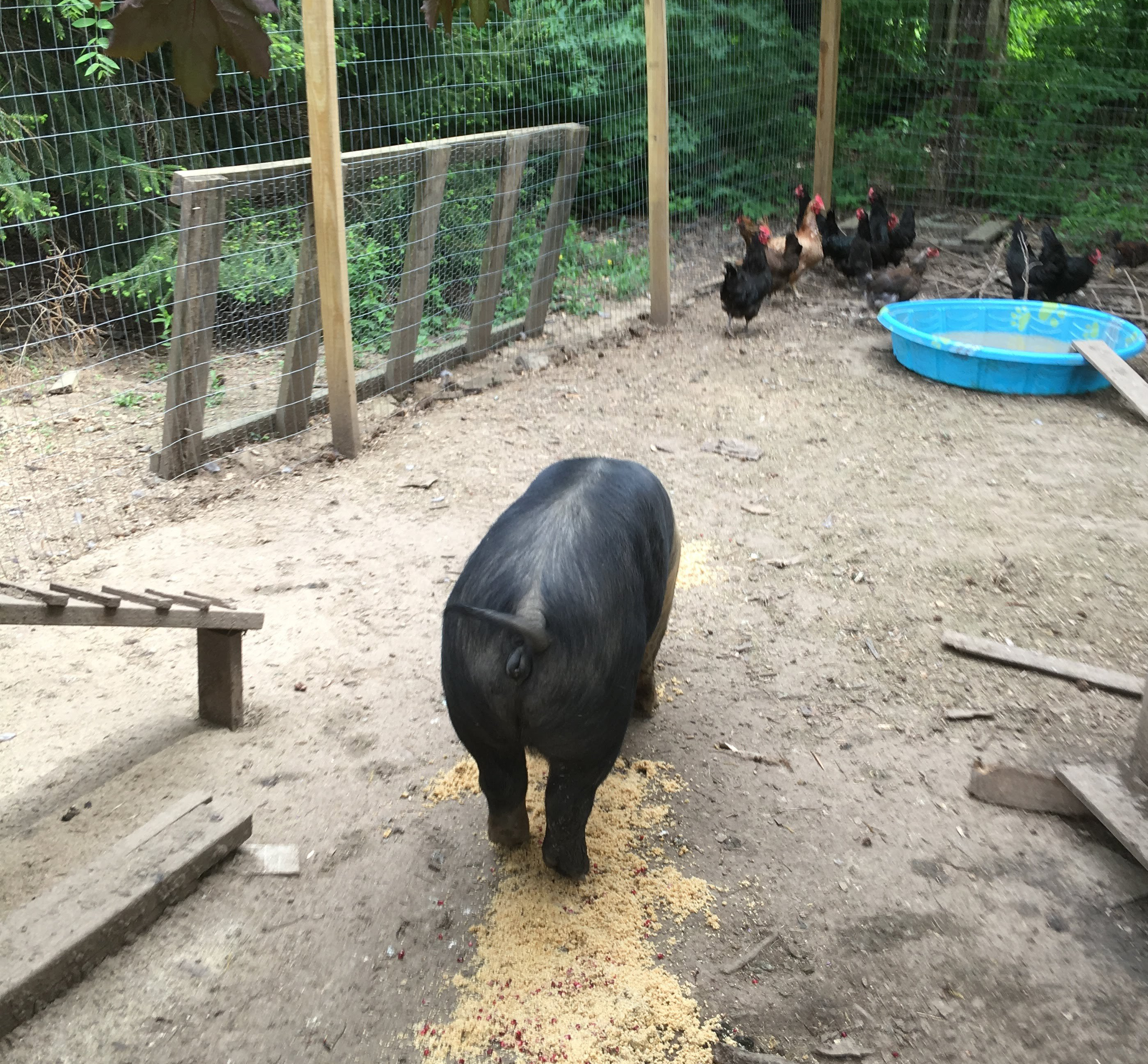
After our acrobatic hog climbed out of the trailer, we stashed her in the chicken run until we could get the hog fencing set back up. The hens were not amused!
You’ll love it when every scrap from your garden, kitchen, butchering table, or dinner leftovers are turned into bacon. Even weeds, poison ivy, and, kitchen gray water gets devoured by pigs. Eventually, you’ll wonder how you ever got anything cleaned up without them.
According to Edmund Morris in the famous 1864 classic guide to independent farming, “The business of raising and carefully attending to only half a dozen hogs, is worthy of every farmer’s serious study and attention.” (link)

These were our first hogs! They love the fresh air, green grass, and companionship.
The first step is to check and see if your land is zoned for agriculture use. If so, you’re well on your way. If not, you still may be able to raise hogs depending on your zoning and city/county ordinances. You can always raise them and see if anyone complains 🙂
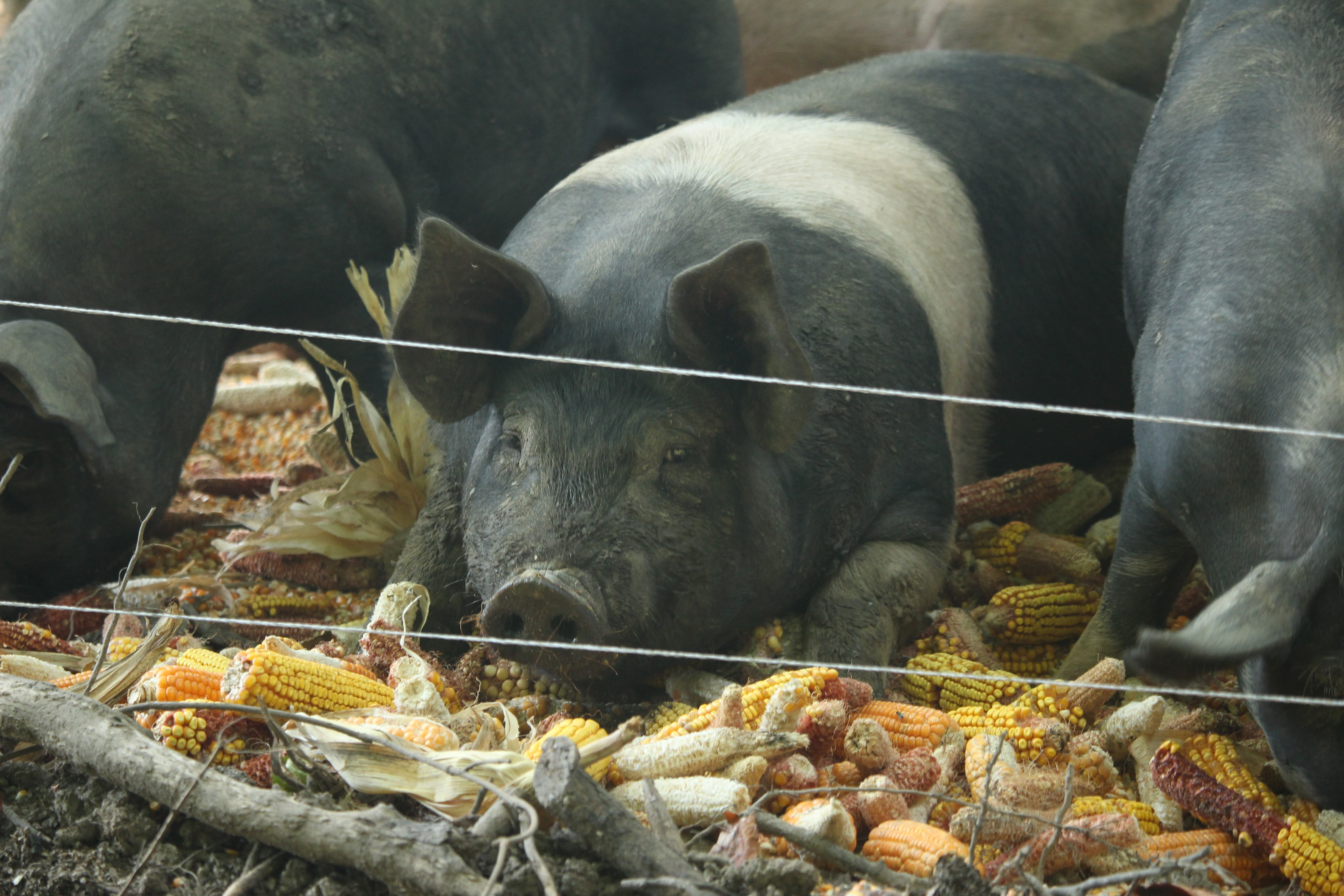
Hog love the woods. Trees provide plenty of shade, lots of roots and plants for a snack, poison ivy to munch on, and best of all – hills and ravines to run up and down. Hogs are like children. They need a space to play, make a mess, and shade for an afternoon siesta.
Piglets
Piglets are known in the farming community as feeder pigs. A feeder pig is a hog that has been weened from it’s mother and is less than 40lbs, give or take. I would look for a producer who is trying to support the heritage breeds and understands the value of trait diversity. Remember, you want hogs that can withstand extreme temperatures, exposure to the outside elements, and have the natural instinct to forage. A confinement breed wouldn’t last a season in my backyard, hence, I stick to old world heritage breeds. I raise Hampshire and Herefords because they are the earliest recorded breeds in America and because it’s what my producer grows! If you are in the Indiana/Illinois/Ohio area, I’d highly recommend using Maddhawg Farms.

Shelter
Although hogs love rain and don’t mind snow, I went ahead and built a three-sided 4 x 8 pallet shed for them to at least get out of a hail storm.
4 pallets
1 sheets of 4×8 plywood (roof)
3 2x4x8
1 box of 2 1\2 in deck screws (T25)

These hogs are supposed to be napping, but I see at least one eye open.
For the flooring, I went ahead and built a deck out of leftover boards. The deck extends further than the front of the shed, which gives them an area for kicking the mud off their feet before entering, but they really only used it for sunbathing. Silly pigs! Otherwise, it can just be dirt, but keep in mind that you’ll have to constantly add bedding. I’ve found that the bedding provides warmth in the winter and soaks up their urine. For bedding, you can use just about anything: straw, pine shavings, ampalaya vines, grass clippings, or whatever you have on hand.
Fencing
The big questions is how to keep them contained. When they are piglets, this can be tricky. The best way is to acquire some hog panels (cow panels have larger spacing) and metal stakes to create a pen in front of your new pallet hog shelter. In the beginning I used the metal wires shaped for connecting hog panels to metal stakes, but now I just use zip ties. Zip ties won’t hold in a 150 pound hog, but do a decent job for the piglets. Zip ties are much easier to remove when we are ready to remove the hog panels.
Wait…remove the hog panels? Yes, you don’t want to raise hogs in a confined area right? Remember, they are like children. Can you imagine raising children with no access to parks, green space, creeks, mountains, ponds, or lakes?

Look closely and you can see the electric fence wire connected to the round red posts in front of the hog panels. In the foreground, are hogs that are already trained on the electric fence wire.
Once the panels are up, you can toss the piglets inside and start planning for your electric fence. The plan is to get the electric fence setup and train the piglets on one or two lines of electrified wire before you remove the panels and run the fence anywhere you want. They’ll respect it even though it’s only a line or two – as long as it’s set to the proper height. A pigs nose is very sensitive, so make sure to run your lines right at snout height. I run one bit lower, as well, just to be safe.
With this set up, I’ve successfully run electric lines through ravines, creeks, and in an open field. I prefer using the following materials, in order to get a no-hassle fence setup in about 30 minutes. (This post contains affiliate links)
Gallager 110-Volt fence charger – this is the only charger I would trust to really push back a big hog. It’s tempting to save money by going with a smaller charger, but the bigger one is worth the peace of mind. I wouldn’t use anything with less than three joules.
Gallagher Electric Fence Wire – I love this polywire because it is easy to setup and wind up on a reel for storage.
Gallagher Wire Reel – a reel is not absolutely necessary. You could wind up the polywire on a stick, but when it comes to setting it back up, you’ll be glad when the polywire isn’t a tangled up mess.
Zareba 50 ft Underground Wire – after you measure the distance from your charger (mine is in the basement) to your electric fence, purchase plenty of hook up wire the underground electrical connection. I buried mine 6 inches deep with a shovel. It’s always nice to have extra for connecting gates, paddocks across a road or trail, etc.
Posts and Insulators – I started with 25 posts and 50 insulators (two insulators per post). This will give you a decent size area for three hogs. You can also always add more later.
Bolt Connectors – I use several of these on every electric fence setup to connect the hookup wire to the polywire.
Gate Holders – Normally, I would just walk over the electric line when visiting the hogs and lay the posts on the ground when driving the trailer into their paddock. But last year, I started using plastic gate holders and now I’m never going back. It doesn’t take more than a few mins to setup.

Feeding Your Hogs
Back to Edmund Morris,
“they shared with the cow in the abundant trimmings and surplus from the garden, eating many things which she rejected, and appropriating all the slop from the kitchen. In addition to this, we fed them twice a day with boiled bran, sometimes with a handful of corn meal, but never upon whole corn.”
In essence, you can feed them whatever you have on hand and for the most part, if they don’t like it or it’s not good for them, they’ll stay away from it. I’ve never had a hog that liked onions, potatoes, garlic, or peppers. So, don’t bother with those. In order to ensure that the hogs have a balanced diet, I would recommend that you purchase feed from a local grain elevator or supplier and only supplement 50% of their diet with food/garden scrapes. The feed ensures that they receive the proper vitamins and protein to grow strong and healthy. If you don’t have a lot of food or garden scraps, I would suggest looking at other supplement food sources to keep your feed costs down. Here are 3 that I use regularly:
Spent Grain – talk to you local brewery and ask them if they would fill-up a tote for you of their spent grain. Spent grain is the boiled grain used to make the wort. The wort is then poured into a secondary tank for fermentation, while the spent grain is dumped into a compost or trash bin. Yet, there are a lot of nutrients left in the grain and it still has about 8-12% protein (hog grower feed has 16-18% protein). If you are able to convince the brewery that giving you the spent grain is mutually beneficial, then you need to provide them with containers to fill. I’ve heard of farmers using everything from storage totes to trash cans to load spent grain, but you want to make it as convenient as possible for the brewer. I would highly recommend purchasing used IBC (intermediate bulk container) or pallet tank, which is a reusable industrial container designed for the transport and storage of bulk liquid and granulated substances, such as chemicals, food ingredients, solvents, etc. Be sure to buy ones used for food grade substances only.
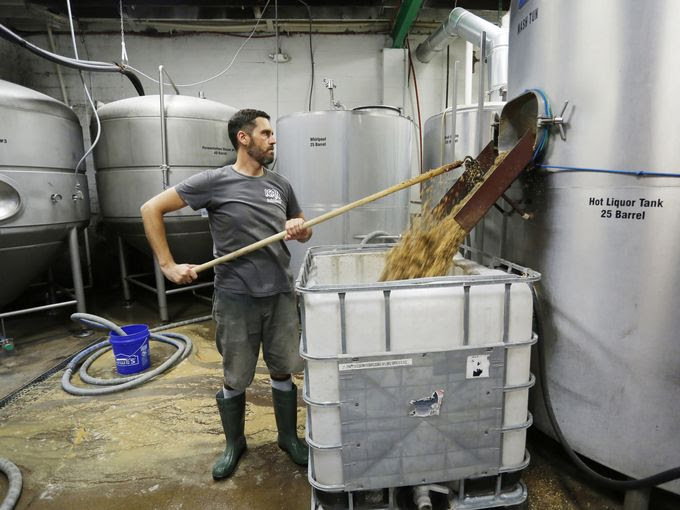
Typically, your brewery will have a fork lift to move the IBC/pallet tote to your pickup truck or trailer once it is filled. Once you get it home, you can use any number of creative or labor intensive methods of unloading it into the hog pen.

The hogs love spent grain from the brewery, but always best feed it to them fresh. Since it’s basically, boiled grain, the moisture content is high and it’ll spoil quickly in the summer.
Food Distributor or Grocery Store – unlike the spent grain, you have to be picky dealing with these folks. They want to get rid of everything to save space in their trash compactor, so I have a few rules on what I’ll pickup from a food distributor or grocery store with whom I have partnered for food pickup.
Rule 1: I only pick up bulk items that are in their natural state. Fresh veggies and fruit are the most common. I’ve picked up totes of apples, tomatoes, watermelon, cabbages, etc.
Rule 2: Don’t pick up anything with excessive packaging. Trust me! When you are opening a 1000 bags of lettuce and your farm is littered in plastic, you won’t be happy. It’s not worth the work. If it comes in large 20lb bags then that works. But opening individual salad bags then having multiple little bags of croutons, dressing, and cheese fall out? You’ll be cursing your beloved hogs!
Although, the hogs aren’t allowed to eat junk food, we made an exception for the Button vs PeterXavier pie eating contest.
Community Garden
Just about every community garden has a scrap pile where everyone dumps their rotten veggies, vines, weeds, etc. Stop by with your pickup truck and help them clear it out! When I stop by the community garden scrap pile, I’m looking for melons, tomato vines, and pumpkins. Every garden has too many pumpkins.
Finally, have fun with your hogs. They are like children. Joel Salatin has a great line from his book, The Marvelous Pigness of Pigs,
“one of my favorite joys, is stepping across the electric fence to commiserate with a group of our pastured pigs. My special treat is to sit down, preferably on an old stump, get real quiet and still, then just wait. Sure enough those pigs eventually ease over to check me out. They snoodle up and down my pants pushing their wet noses into creases. Others nip at my shoelaces and chew at the soles of my shoes…the friendliest and most docile sidle up alongside and place a chin on my knee, waiting for a rub. Feel free to pet your piglets often and they’ll reward you 6 months later with a gentle snout on your lap when they are twice your size.”









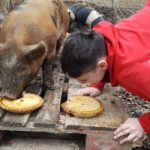






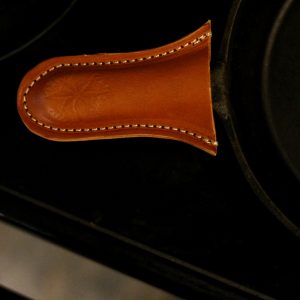


0 Comments